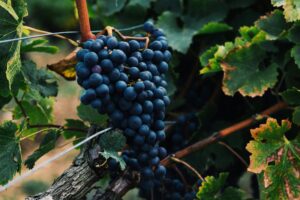
The Naga New Year Festival is a significant cultural event celebrated by the Naga community in Northeast India. This festival holds great historical and cultural importance in the lives of the Nagas, as it showcases their rich traditions, rituals, and customs.
The festival spans over five days and is filled with various activities such as traditional games, religious ceremonies, music and dance performances, feasting, storytelling, and more. It is a time of joy, celebration, and reflection for the Naga community, fostering a sense of unity and preserving their cultural heritage.
Facts About The Naga New Year Festival
| Facts | Explanation |
|---|---|
| Name of the festival | Naga New Year Festival |
| Type of festival | Cultural, Religious |
| City of origin | Kohima |
| Festival Etymology | The festival is named after the Naga people, an ethnic group indigenous to the northeastern regions of India and northwest Myanmar. The term “Naga” refers to the people of the Naga Hills. |
| Date when it was celebrated first | April 1, 1974 |
| Founder of the Festival | Naga Students’ Union, Kohima Branch (NSUK) |
| Brief history of the festival | The Naga New Year Festival was first celebrated on April 1, 1974, organized by the Naga Students’ Union, Kohima Branch. The festival aims to promote and preserve the rich cultural heritage of the Naga people. It provides a platform for showcasing traditional dances, music, arts and crafts, and indigenous cuisine. The festival also includes various competitions and events that highlight the cultural diversity of the Naga tribes. Over the years, it has become a significant event in the region, attracting both locals and tourists. |
| Brief history of the city | Kohima is the capital city of Nagaland, a state in Northeast India. It is situated in the Naga Hills and is known for its scenic beauty and rich cultural heritage. Kohima played a crucial role during World War II as it was the site of the Battle of Kohima, one of the most significant battles fought in the Asian theater. The city has since emerged as a major administrative, educational, and cultural center in the region. With its pleasant climate and picturesque landscapes, Kohima attracts visitors from all over the world. |
| Ethnic information | The Naga people are an ethnic group comprising various tribes, each with its distinct language, customs, and traditions. They are primarily found in Nagaland, Manipur, Assam, and Arunachal Pradesh in Northeast India, as well as in parts of Myanmar. The Naga tribes have a rich cultural heritage that includes vibrant festivals, traditional attire, folk music and dance forms, and unique handicrafts. They are known for their warrior traditions and have played a significant role in shaping the history and culture of the region. |
| Location of the city in the country | Kohima is located in Nagaland, which is in Northeast India. |
| How to reach the city | The Naga New Year Festival was first celebrated on April 1, 1974, and organized by the Naga Students’ Union, Kohima Branch. The festival aims to promote and preserve the rich cultural heritage of the Naga people. It provides a platform for showcasing traditional dances, music, arts and crafts, and indigenous cuisine. The festival also includes various competitions and events that highlight the cultural diversity of the Naga tribes. Over the years, it has become a significant event in the region, attracting both locals and tourists. |
| Nearby and surrounding cities or towns | – Dimapur (74 km) – Imphal (132 km) – Guwahati (345 km) – Shillong (346 km) – Aizawl (472 km) – Silchar (500 km) – Dibrugarh (543 km) |
| Google map link to the city location | Kohima on Google Maps |
| Festival main events and activities | – Traditional dance performances – Music concerts showcasing local talent – Fashion shows displaying Naga traditional attire – Indigenous food stalls offering local delicacies – Handicraft exhibitions featuring traditional arts and crafts – Cultural competitions such as singing, dance, and storytelling – Traditional games and sports competitions |
| Other famous tourist attractions | – Kisama Heritage Village: A living museum that showcases the traditional lifestyle and culture of the Naga tribes. – Japfu Peak: The second-highest peak in Nagaland, offering panoramic views of the surrounding hills and valleys. – Kohima War Cemetery: A memorial dedicated to the soldiers who lost their lives during the Battle of Kohima in World War II. – Dzükou Valley: A picturesque valley known for its stunning landscapes and seasonal flowers. – Khonoma Village: A model eco-village known for its conservation efforts and traditional practices. |
| Famous food dishes of the city | – Bamboo shoot curry – Smoked pork with akhuni (fermented soybean) – Naga chili pork – Galho (a rice-based soup) – Axone (fermented soybean) chutney – Sticky rice cakes (known as pitha) – Naga-style smoked meats – Local brews like Zutho (rice beer) and Thutse (millet beer) |
| Landmarks in the city | – Kohima Cathedral: A beautiful Catholic church with stunning architecture. – Naga Heritage Village: A cultural center that showcases the art, craft, and traditions of various Naga tribes. – State Museum: Exhibits artifacts related to Naga history, culture, and lifestyle. – Dzüleke: A scenic village known for its natural beauty and trekking opportunities. – Kohima Zoo: Home to various species of animals and birds native to the region. – Kohima Botanical Garden: A serene garden with a variety of flora, ideal for nature enthusiasts. |
| Related festivals | – Hornbill Festival: Celebrated in Nagaland, this festival showcases the cultural diversity of various Naga tribes. – Sangai Festival: Celebrated in Manipur, this festival highlights Manipuri culture along with various dance forms, music performances, and traditional sports. – Moatsu Festival: Celebrated by the Ao Naga tribe in Nagaland, this festival marks the end of the sowing season with feasts, dances, and folk songs. – Aoling Festival: Celebrated by the Konyak Nagas in Nagaland, this festival signifies the arrival of spring with vibrant cultural displays and traditional games. |
History of the Naga New Year Festival
The Naga New Year Festival has a rich history deeply rooted in the culture and traditions of the Naga people. It is believed to have been celebrated for centuries as a way to mark the beginning of a new year and to honor their ancestors. The festival showcases the unique customs, rituals, and festivities that have been passed down through generations, making it an integral part of Naga heritage.
Significance of the festival in Naga culture
The Naga New Year Festival holds immense significance in Naga culture. It is a time when the community comes together to celebrate their traditions, customs, and ancestral heritage. The festival serves as a reminder of their cultural identity and strengthens the bonds within the Naga community. Through various rituals, ceremonies, and performances, the festival showcases the rich cultural heritage of the Nagas and helps to preserve and promote their traditions for future generations. The Naga New Year Festival is a symbol of pride and unity for the Naga people.
Preparations for the Naga New Year Festival
The preparations for the Naga New Year Festival are a significant part of the celebration. Traditional rituals and ceremonies are performed in the days leading up to the festival, ensuring that everything is set for the grand event. The Naga people put great effort into decorating their homes and dressing in festive attire. These preparations create an atmosphere of excitement and anticipation, setting the stage for a memorable Naga New Year Festival.
Traditional rituals and ceremonies before the festival
Traditional rituals and ceremonies hold immense importance in the lead-up to the Naga New Year Festival. The Naga community engages in various pre-festival rituals, such as purification ceremonies, offerings to ancestors, and prayers for a bountiful year ahead. These rituals aim to seek blessings, ward off evil spirits, and ensure a prosperous celebration. The Naga people deeply value their cultural heritage and these pre-festival rituals play a vital role in setting the tone for the grand festivities that follow.
Decorations and festive attire
Decorations and festive attire play a significant role in the Naga New Year Festival. Vibrant colors, intricate patterns, and traditional motifs adorn the festival venues. Houses are decorated with bamboo poles, flowers, and colorful ribbons. The Naga people don traditional attire, showcasing their rich cultural heritage. Men wear colorful shawls and headgear, while women adorn themselves with intricately woven garments and jewelry. The vibrant decorations and traditional attire add to the festive atmosphere of the Naga New Year Festival.
Day 1 of the Naga New Year Festival
On the first day of the Naga New Year Festival, the Naga community comes together to celebrate and honor their cultural heritage. The day is marked by various traditional rituals and ceremonies, including prayers for blessings and prosperity in the coming year. The festival also features an array of traditional games and sports that showcase the physical prowess and skills of the Naga people. It is a day filled with joy, camaraderie, and a deep sense of cultural pride.
Ways of celebrating the first day
On the first day of the Naga New Year Festival, the Naga community comes together to celebrate with great enthusiasm and joy. The day is marked by various traditional rituals and ceremonies, including prayers, blessings, and offerings to the ancestors. People dress in their festive attire and gather in large numbers to participate in cultural activities such as traditional dances, music performances, and storytelling. It is a time of unity, reflection, and gratitude as the Naga people welcome the new year with open hearts and renewed spirits.
Traditional games and sports
Traditional games and sports play a significant role in the Naga New Year Festival. People gather to participate in various traditional games and sports, showcasing their skills and strengths. Games like wrestling, archery, stone lifting, and tug of war are popular among the Naga community. These activities not only promote physical fitness but also foster a sense of camaraderie and unity among the participants. The Naga New Year Festival is an occasion where ancient traditional games and sports are celebrated and cherished.
Day 2 of the Naga New Year Festival
On the second day of the Naga New Year Festival, the festivities continue with religious ceremonies and processions. The community comes together to honor their ancestors and seek blessings for the upcoming year. Traditional music and dance performances are also a highlight of the day, showcasing the rich cultural heritage of the Naga people. This day is filled with joyous celebrations and a sense of spiritual connection, making it a significant part of the Naga New Year Festival.
Religious ceremonies and processions
Religious ceremonies and processions are an integral part of the Naga New Year Festival. During this time, the Naga community comes together to honor their traditional beliefs and pay homage to their ancestors. The festival is marked by elaborate rituals and sacred processions, where participants offer prayers and perform sacred dances. These ceremonies hold deep spiritual significance for the Naga people, fostering a sense of unity and cultural identity. The religious aspect of the festival adds a profound dimension to the overall celebration of the Naga New Year.
Traditional music and dance performances
Traditional music and dance performances are an integral part of the Naga New Year Festival. The festival showcases the rich cultural heritage of the Naga community through vibrant and energetic performances. Traditional songs, accompanied by traditional musical instruments such as drums and bamboo flutes, create a lively atmosphere. Colorful costumes and intricate dance movements further enhance the visual spectacle. These performances not only entertain but also preserve and promote the unique traditions of the Naga people during this festive celebration.
Day 3 of the Naga New Year Festival
Day 3 of the Naga New Year Festival is dedicated to the celebration of traditional arts and crafts. Artisans showcase their skills in wood carving, pottery, weaving, and jewelry making. Visitors can admire the intricate designs and purchase unique handmade items. The day is also filled with feasting and socializing, as people gather to share meals and exchange stories. It is a time to appreciate the rich cultural heritage of the Naga community and support local craftsmanship.
Celebration of traditional arts and crafts
The Naga New Year Festival is a celebration that not only showcases the rich cultural heritage of the Naga people but also highlights their exceptional traditional arts and crafts. On the third day of the festival, there is a special focus on the celebration of these artistic traditions. Visitors can witness various demonstrations of traditional craftsmanship, including pottery making, weaving, wood carving, and basketry. The festival provides a platform for artisans to display their skills and for attendees to appreciate and support these unique art forms. The celebration of traditional arts and crafts adds depth and vibrancy to the Naga New Year Festival, making it a truly enriching experience for all.
Feasting and socializing
Feasting and socializing are integral parts of the Naga New Year Festival. During this time, families and community members come together to enjoy traditional Naga cuisine and partake in elaborate feasts. The festival provides an opportunity for people to bond, share stories, and strengthen relationships. Socializing plays a crucial role in preserving Naga culture and fostering a sense of unity within the community. The festive atmosphere creates a joyful ambiance where people can relax, connect, and celebrate together.
Day 4 of the Naga New Year Festival
On Day 4 of the Naga New Year Festival, the celebrations continue with a focus on folklore, myths, and stories. Elders and storytellers gather to share traditional tales that have been passed down through generations. This day also highlights traditional healing practices and remedies, showcasing the rich cultural heritage of the Naga community. It is a time for reflection and appreciation of the wisdom and traditions that have shaped their identity.
Folklore, myths, and stories told on this day
Folklore, myths, and stories play a significant role in the Naga New Year Festival. On this day, elders and storytellers gather to share tales that have been passed down through generations. These stories often revolve around the origins of the festival and the cultural beliefs of the Naga community. Through these narratives, participants gain a deeper understanding of their heritage and values, fostering a sense of unity and pride during the festival.
Traditional healing practices and remedies
Traditional healing practices and remedies play an important role in the Naga New Year Festival. During this time, traditional healers known as shamans utilized their knowledge of herbs, plants, and spiritual rituals to treat ailments and restore balance to the body and mind. These healing practices have been passed down through generations and continue to be an integral part of Naga culture.
Visitors to the festival can witness these ancient healing techniques and learn about the rich traditions that contribute to the holistic well-being of the Naga community.
Day 5 of the Naga New Year Festival
On the fifth and final day of the Naga New Year Festival, the celebrations reach their peak with a grand gala night and cultural extravaganza. The evening is filled with vibrant performances showcasing the rich cultural heritage of the Nagas. Contemporary music and dance performances take center stage, bringing together traditional and modern elements in a mesmerizing display.
This night is a culmination of the festival, leaving everyone in awe of the Naga culture and creating lasting memories for all who attend.




